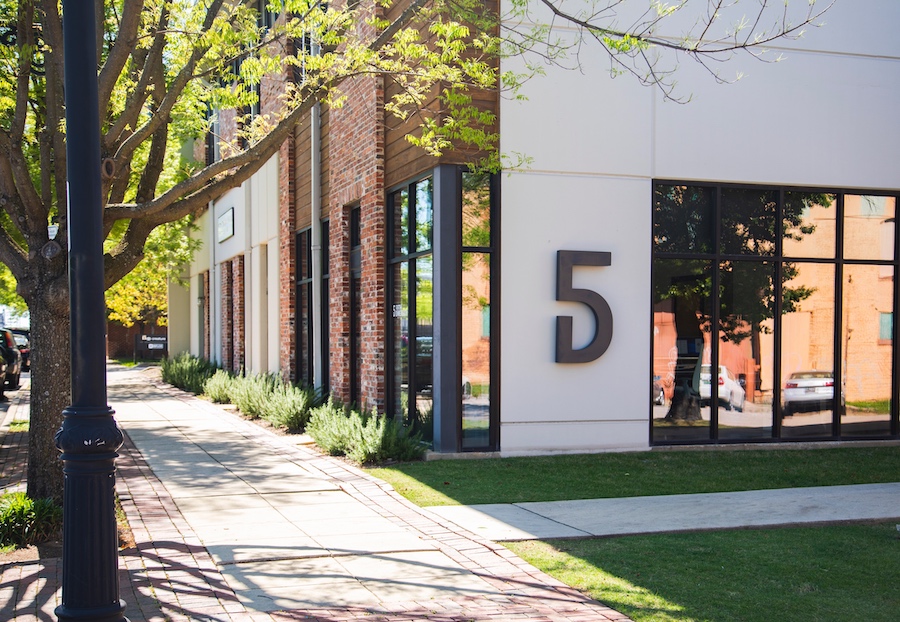Pandemic-Induced Hiring Freezes Strain New Grads

2019 architecture graduates pose outside of Syracuse University’s Slocum Hall
Photo © Alexandra Moreo
With commencement in the rearview mirror, recent graduates of architecture programs are feeling the consequences of COVID-19 on their employment options. Excitement about the future has been replaced with desperate e-mailing and joblessness worries as hiring freezes become commonplace.
Some firms have been able to extend offers, taking on new hires with later-than-typical start dates; 5th Dimension Architecture & Interiors in Austin, Texas, for instance, hired Lauren Wertz, a new B.Arch. graduate of Auburn University. She started applying for jobs in January and notes that her peers who started interviewing in March are becoming frustrated.

Wertz had completed her third interview when the pandemic halted hiring among prospective employers, including 5th Dimension, which paused to reevaluate their workload, but finally offered her a position starting mid-August.
Other firms continue to suspend all hiring (and in fact may be laying off staff) until they have a better sense of how the pandemic is affecting their business. Perkins and Will rescinded the few internship offers they made before coronavirus and implemented a hiring freeze before the full-time offers were sent out.
“With uncertainty about how the crisis might impact our backlog of work, we opted to take a conservative approach and pause,” says principal and chief talent officer Meg Brown. “This is a decision we did not take lightly, and we remain eager to revisit recruitment once this economic crisis is behind us.”
Some firms are staying in touch with prospective hires even if they cannot make an offer now. Greg Schaub, who just completed his B.Arch. at Iowa State University, continues to hear from a midsize practice in the Midwest. “I just have to be patient and wait until it’s over,” he says, grateful that the firm has at least let him know they are still interested. “They keep me up to date on things but just won’t know for a while. It makes me think that this would be a good place to work.”

That communication between emerging designers and potential employers will help to shape the post-pandemic landscape. “My encouragement to all of my students is to follow up with grace and knowledge that this is an unprecedented time,” said Crystal Jalil, career-services specialist at Auburn’s School of Architecture, Planning, and Landscape Architecture. “Don’t give up on connecting with hiring managers or principals at firms that you really are interested in. Let them know that you still would love to continue a conversation with them when it makes sense.”
The longer architecture grads go without employment, the more likely they are to expand their job search to related fields, such as interior, lighting, furniture, product, landscape, or experience design. Some may even look beyond design, to business development, communications, or education.
“There are transferable skills you will get from any job—communication, leadership, analytical skills—that you may not have expected,” says Kristen DeWolf, director of career services at the Syracuse University School of Architecture. But such a detour can be risky, as HOK’s Kimberly Dowdell has seen firsthand. The Chicago-based architect, who graduated during the Great Recession, says nearly half of her architecture-school classmates are not employed in the profession in the traditional sense. “Between 2008 and 2010, people got really creative with what they were going to do,” she says. “They went into real estate, construction, academia—and others took a major pivot into something else entirely.”
In the meantime, candidates can build their technical skills. Mindy Levine-Archer, a partner at NBBJ in Seattle, encourages new graduates to take this time to learn the tools and platforms that their desired employers use, as well as build their knowledge outside design.
“Whether it’s through technology, sustainability, business, or applied research, having additional skills in their toolbox is also compelling,” says Levine-Archer. “All of those things are added benefits as they look for jobs. We learn from them as much as they learn from us.”



